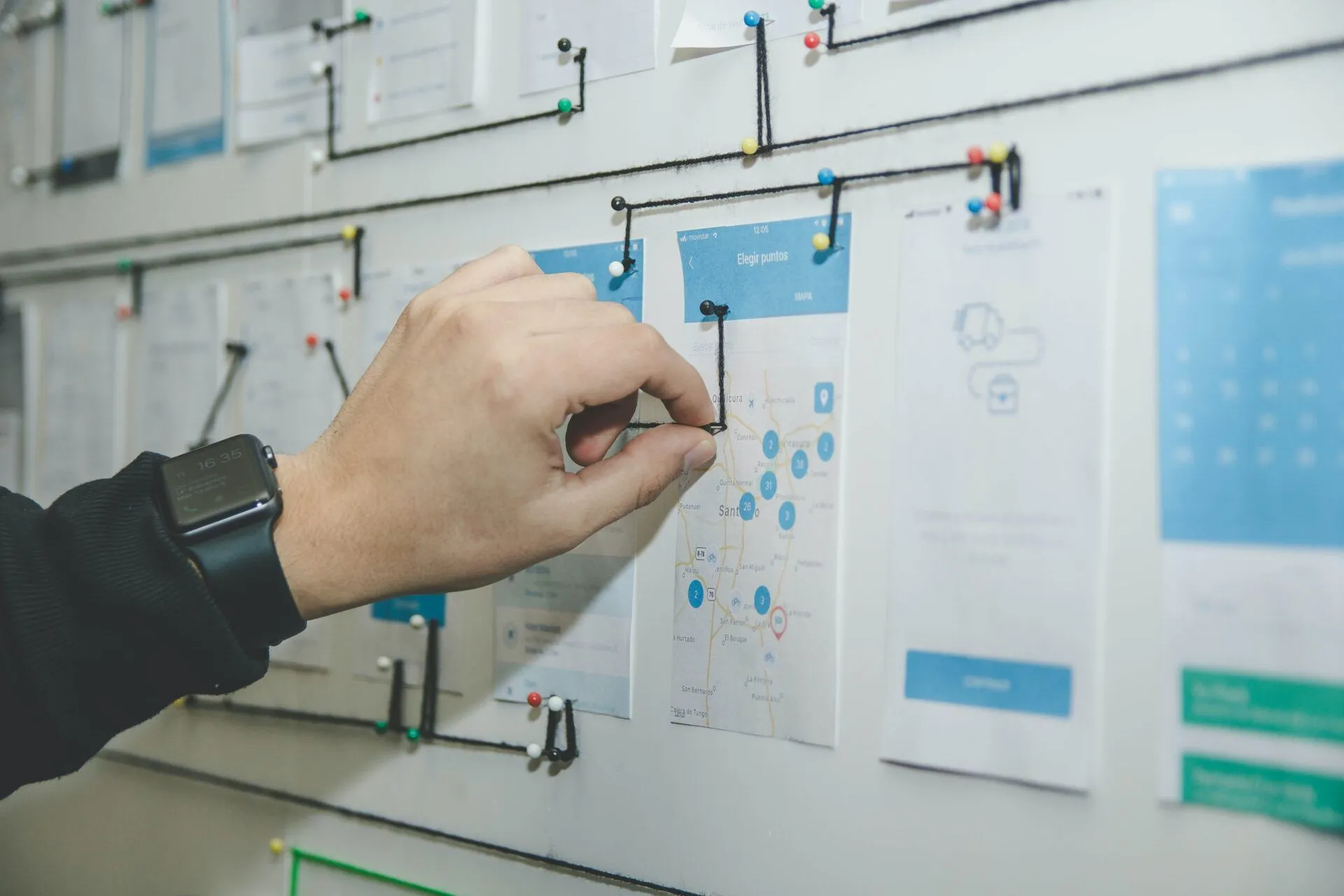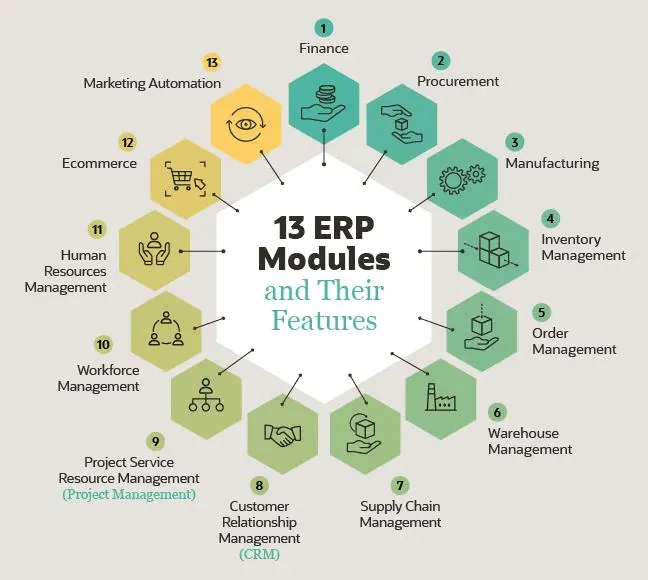What is Enterprise Resource Planning (ERP)?

No matter the size of your organization, there are probably hundreds of day-to-day business functions that prove essential to your survival.
Think about it. What would happen to your company if certain jobs were to fall drastically behind?
It wouldn’t be good.
Therefore, ensuring these vital tasks are completed both efficiently and effectively could make a big difference to your bottom line. However, due to the extravagance of such a duty, it’s almost impossible to achieve.
After all, one person can’t possibly keep track of everything going on in their company – even a small one. In fact, an entire team of expert leaders would struggle to stay coordinated at all times, regularly experiencing miscommunications and letting mistakes “slip through the cracks”.
In these situations, Enterprise Resource Planning (ERP) systems provide a convenient and timely solution. Their purpose is to direct essential business operations, allowing employees to smoothly complete jobs and drive business growth.

Table of Contents
The Definition of Enterprise Resource Planning (ERP)
Enterprise Resource Planning is the process of managing and integrating crucial business processes across your organization, such as HR or accounting.
By facilitating information sharing across a company, Enterprise Resource Planning can actively increase accountability and employee performance.
What’s more?
Leaders use Enterprise Resource Planning as a way to establish the specific tasks and responsibilities of their teams.
What is an Enterprise Resource Planning System?
An Enterprise Resource Planning (ERP) system, therefore, is the piece of software that automates this entire process in order to make it more efficient – collecting actionable data along the way.
It’s essentially a series of application suites that coordinate together to streamline the interaction of people and technology in one system.
Why? To aid employees on a day-by-day basis, helping them make informed decisions and ensuring every “box” gets ticked. As such, each of your processes can be optimized to build agility and resiliency into your workforce.
The Features of an Enterprise Resource Planning System
One market-leading Enterprise Resource Planning provider, NetSuite, has managed to design a platform that successfully covers the majority of business activities.
Through its work to integrate departments like:
- Finance
- Manufacturing
- Marketing
- Ecommerce
- Sales
All the employees in your organization can stay up-to-date on the state of work orders – using Enterprise Resource Planning to collaborate together and efficiently complete vital tasks.

What is the Business Value of an Enterprise Resource Planning System?
Imagine an organization where employees were consistently able to perform at their very best. It would be a dream come true, right?
With Enterprise Response Planning, it becomes possible.
- Break down the barriers to communication.
- Share knowledge, data and resources.
- Automate time-consuming digital tasks.
- Measure operational performance.
Rather than experiencing frequent project delays because of hold-ups likely out of your team’s control (such as waiting for a budget to be signed off by the CFO), Enterprise Resource Planning systems influence a proactive response.
When your staff members are up-to-date and informed about the activity of your business, they can use their time more effectively and achieve maximum productivity.
The Top 5 Reasons Why You Need an Enterprise Resource Planning System
At its core, Enterprise Resource Planning ensures efficiency and cuts wastage.
Through it, teams can gain a clear overview of their working expectations and gain access to all the information required to do their job.
Instead of making costly mistakes, they can tap into deep data insights and make decisions accordingly.
Increased Productivity
As we’ve briefly touched on already, Enterprise Resource Planning systems are the perfect tool for organizations wanting to increase employee productivity. Simply by eradicating the risk of miscommunications leading task teams astray, you can ensure everyone is always on-track to be working towards your business goals.
Ensure Compliance
When did you last conduct a safety review of your building? Have the lightbulbs been replaced? Is there anything stored in front of the fire exits? All areas of facilities management can be adhered to through Enterprise Resource Planning, helping you not only stay compliant with local rules and regulations in your area but also protect the wellbeing of your employees. Both are equally important.
Simplify IT
When you have all your management in one place, you can significantly reduce the number of applications your company has to run on a day-to-day basis. As such, when there are issues – you don’t have to spend hours trying to decipher which program is having a problem. This could significantly reduce your IT costs and also the average spend on training. As opposed to onboarding an employee on numerous systems, they just need to learn one.
Improve Agility
Responding to a crisis across your organization requires intense and clear communication. With Enterprise Resource Planning, this is possible. As your employees sync their work goals and act as a company-wide unit, they’ll be better positioned to respond to issues that arise. Rather than feeling frustrated when something goes wrong, they’ll likely have the right contact in mind who would be able to help them – drastically growing your firm’s ability to respond to market changes.
Gain Deeper Insights
Every leader loves data. However, when you have multiple platforms all generating their own insights, it can be easy to lose focus on what’s important. By compiling this all into one place on your Enterprise Resource Planning software, and allowing other employees to access it, you can make the most of the information available to you and run your business accordingly.
3 Favorite Enterprise Resource Planning Systems
With the help of innovative Enterprise Resource Planning, leaders no longer have to micro-manage daily to-do lists. They can focus their efforts elsewhere.
Rather than spending time organizing schedules, fixing employee mistakes, or trying to catch up on overdue work, they can invest in building team relationships or encouraging professional learning and development.
Some of the most popular providers in the market (with incredibly high reviews) include:
- Oracle Cloud ERP
- Microsoft Dynamics
- SAP Business One
Each promises a whole host of unique benefits and features, so taking the time to conduct research would be well worth the effort. While Enterprise Resource Planning systems are typically fairly comprehensive by definition, every business has its own requirements.
How to Onboard Enterprise Resource Planning Software into Your Company
Introducing Enterprise Resource Planning to your organization isn’t an easy accomplishment.
It requires hundreds of functions and features to operate together on one system, often resulting in a confusing (and overwhelming) learning experience.
If you want to equip your team to use ERP systems and benefit from all it has to offer, you need a strategic approach to introduce it to them; slowly and carefully.
- Dedicate time and attention to their training, and be patient with employees who are already struggling with overbearing workloads.
- Remain sensitive that, while Enterprise Resource Planning might be a priority to you, it could be seen as a burden to a team who doesn’t have the mental capacity (or time) to learn how to complete their tasks in a new way.
- Familiarize yourself with the crucial elements of change management and be prepared to answer questions that come your way.
Then, as your employees learn how to use the new system, you can ensure they are engaged in the experience and excited to pick up a new skill – rather than apprehensive and frustrated.
What’s more? Be sure to use blended learning to cater an individual’s training according to their needs, and you’ll soon find your organization is well on its way to embracing Enterprise Resource Planning.
To further this mission, you could even consider selecting someone to champion the change, dedicating time to onboard a few specific individuals who’ll be able to encourage and support their colleagues along their learning journey.
Enterprise Resource Planning (Put into Practice)
Imagine you’re a service-based business that has a big project coming up.
The client is big enough to book out your entire team for weeks on end. Nailing their work could lead to more and more referrals.
You don’t want any delays. You don’t want any “complications”.
You need everything to go smoothly to meet the deadline, and for there to be no conflict between different departments.
That’s where Enterprise Resource Planning comes in.
The effective and proactive management of all elements of your company can encourage everyone to work closely together to get the job done.

What is Enterprise Resource Planning? (ERP) – FAQs
Time and time again, Enterprise Resource Planning has proven to be an incredible and intelligent way for businesses to organize their operations and improve overall performance.
If you still need more guidance, check out Userlane’s ERP training guide or read through these insightful FAQs.
- What is an example of Enterprise Resource Planning?
When your HR department wants to award an employee with a financial benefit – such as covered travel costs – they likely need to run this by the financial team. This could take days if the task is not prioritized through an Enterprise Resource Planning system, which increases cross-departmental coordination.
- What are the benefits of Enterprise Resource Planning?
Largely, Enterprise Resource Planning allows you to share crucial information across your organization, ensuring that all relevant parties have the knowledge and resources required to complete their job. You can benefit from better efficiency and productivity by increasing access to data and enhancing communication channels.
- Why do I need an Enterprise Resource Planning system?
ERP is particularly useful to medium and large companies that have problems communicating across their organization. When you have multiple departments that need to coordinate to do their job effectively, an Enterprise Resource Planning system can create harmony and align employee goals.
Train Employees on ERP through Digital Adoption Platforms
How often do you conduct software onboarding?
If your answer is “regularly”, you already know how finicky it can be.
If you rarely introduce new systems to your workforce, then you probably need a little more guidance before bringing on a complicated system like Enterprise Resource Planning.
Either way, Userlane’s Digital Adoption Platforms have been carefully designed to automate employee training and provide real-time guidance and advice to someone as they try to use unfamiliar software.
Through our specialist and custom service, you can guarantee software rollout success in your organization and quickly bring your team up to speed on how to make the most of your Enterprise Resource Planning system.
Request a demonstration today to find out more.

